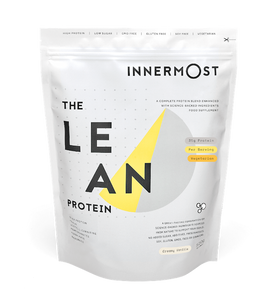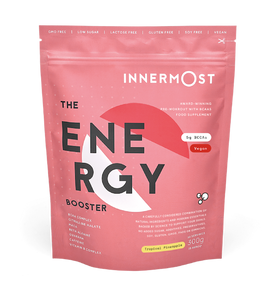For the runners among us, setting a personal best can be one of the best feelings around – bonus points if it’s during an organised public run. The thought of seeing all the months of training and hard work finally payoff drives a motivation to push through any injury, fatigue, or muscle pain to get to the finish line.
With that said, the runners among us (yours truly) can equally be a stubborn bunch when it comes to listening to our body’s injuries, and instead, we try and run through any muscle pain that in the long run will worsen the injury.
Case in point, the dreaded shin splints…
What are shin splints?
One of the most aggravating stress injuries a runner can experience that accounts for around 14% of running injuries, shin splints (also known as medial tibial stress syndrome) refer to the inflammation of connective tissues between the muscle and the tibia bone (shin bone). They most commonly occur as a response to overstressing the lower leg.
It doesn’t matter if you’re a first-time runner or a three-time marathon winner, shin splints can impact anyone and everyone who overworks the muscle.
Some of the primary causes of shin splints are:
- Exercise and over-exhaustion of the lower leg
- Wearing shoes that don’t fit correctly
- Stress reactions to bone fractures
- Not warming up correctly
- Frequently running on uneven surfaces
While the recovery time for shin splints can vary depending on the individual and the extent of the injury, there are a few ways you can speed up recovery and be back to peak performance in no time.
What do shin splints feel like?
Imagine your shins throwing a tantrum every time you take a step – that’s what shin splints feel like. It can range from a dull ache along the front of your lower leg to a sharp, throbbing pain.
It’s your body’s entirely unsubtle way of saying ‘let’s take it easy next time, yeah?’. Any way you slice it, they’re not fun.
How long do shin splints last?
Shin splint recovery time is typically just a few weeks, but this does depend on your recovery efforts and individual physiology. For some, it can take a little longer to get back to full strength, especially if you’re overly eager in getting back to your normal workout routine.
Stretching, rest, gentle exercise and over-the-counter pain medications (like paracetamol or ibuprofen) can help to manage pain and aid recovery whilst you wait.
Tips for shin splints recovery
To hopefully make things a little easier, here are some simple and effective Innermost tips for faster shin splint recovery.
Rest and avoid high-impact activities
While true it might seem obvious to rest and avoid high-intensity workouts after an injury, it’s also the last thing any runner wants to hear.
Given that shin splints are a repetitive strain injury that results from excessive training, the ‘no pain, no gain’ mentality only works here if you’re looking to inflame the injury and delay recovery further. The leg needs time to heal and recover from the inflammation, making rest the best strategy to get rid of shin splints.
On the flip side, it’s also not a good idea to stop exercising completely. There’s always a balance to be found between rest and recovery exercise, essentially if your exercises are worsening your shin splints pain then they are best avoided until further into recovery.
Light and low-impact cross-training exercises like swimming, elliptical training and even just walking can do wonders for your body’s tissues. If not overworked, these hin splint exercises can help with the rehabilitation from injury by building muscle strength. Beyond this, exercise has been proven to have a fundamentally positive impact on mental health and self-esteem.
Ice recovery
Wrapping an ice pack – something like a bag of frozen peas will be equally as efficient – in a towel and placing it on the leg is also a great way to treat shin splints. It might be a little tough to bear at first, but cold therapy can bring down inflammation and reduce pain by slowing down the nerves from sending pain messages to the brain. Icing the injury also increases blood flow, reducing muscle swelling and therefore helping to get rid of shin splints faster.
To give yourself the best chance of a quick recovery - especially right after the injury starts to show – it’s best to apply the ice pack for around 20 minutes every 2-3 hours. If you can, try to continue doing this until the pain and discomfort are completely gone.
Tip: To avoid making things worse by giving yourself ice burns, don’t apply ice directly to the shin. If you only want to use ice then always use a thick cloth as a protective barrier to avoid damaging the skin tissue.
Compression
A similar road to recovery is using compression bands or compression clothing.
As the name gives away, compression wear ‘compresses’ the affected muscle. Similar to an ice pack, this increases oxygen, and blood flow to reduce inflammation and pain. Unlike Ice packs, you can wear compression gear wherever you want (just imagine the thought of walking around at work with an ice pack stuck to your leg).
For shin splint injuries there’s plenty of low-body compression wear available to choose from. This includes socks, shorts and leggings that can be worn over the shin bone and are available in a wide range of sizes.
Like with the use of ice packs, it’s important to ensure that any compression clothes or bandages are worn correctly. The aim is to have them slightly loose while also compressing the injured muscles. Tying a compression bandage too tight or wearing clothes too small will actually hamper recovery as it can limit the blood flow to the affected area.
Here are some of the key signs of tight compression wear that may be impacting your ability to recover:
- Increased pain
- Numbness in the leg
- Leg tingling
- Compression clothes leave marks on the skin
Elevation
While wearing your compression socks or icing your shins are useful, another way to recover faster is simply to elevate your shins/lower leg to something around the heart level. While this sounds silly, lifting your leg like this allows excess fluid to be pushed back into the blood vessels. This reduces and even prevents further swelling, reducing the pressure being placed on the nerves and lowering the resulting pain. One of the best ways to complete this elevation stretches is simply to lie down and elevate your leg on a comfortable surface; something like a pillow or soft chair will work wonders.
Like the cross-training exercises mentioned above, elevation stretches are also a great way of combatting the mental stress of an injury.
How to prevent shin splints
While it’s great to know how to speed up shin splints recovery, ideally you want to avoid going through the pain in the first place. Luckily, there are a few tips to follow that can do just that:
- Wear comfortable shoes – When was the last time you got new running shoes? While breaking in and getting used to running in a new pair of shoes can put us off buying a pair, old shoes can have worn-down treads and cushioning which increases the chance of getting shin splints. Here’s a handy guide on how to choose the best running trainers for you.
- Gradual increases – Whether you are a beginner or have been running for years, it’s fundamental not to overexert yourself. While the specific distance, speed, or intensity you should run is unique to each individual, you should always look to incrementally increase your exercises to gradually build your muscle strength and prepare your body for the more difficult sprints and runs.
- Rest – Yeah, you didn’t want to see this again, but in addition to being a treatment for shin splints, an effective rest schedule can work wonders in helping you achieve your exercise goals. To avoid fatigue and prevent injury, you want to try and take 2-3 rest days per week – although again this is entirely dependent on individual fitness levels. Even when not on a rest day. You should never try and exercise through any muscle pain as this can only lead to injury down the line
- Stretching – Not warming up your Achilles tendon and calf muscles properly is another contributing factor to shin splints. Consider stretching both before and after your run with various static and dynamic stretches.
Preventing and Recovering From Shin Splints
Interested to learn more about shin splints or some of the other most common workout injuries? Wondering what the best steps to aid workout recovery are? Perhaps you have some innovative and inspirational ideas to share? Don’t hesitate to contact us over on our Instagram @innermostglobal.
























